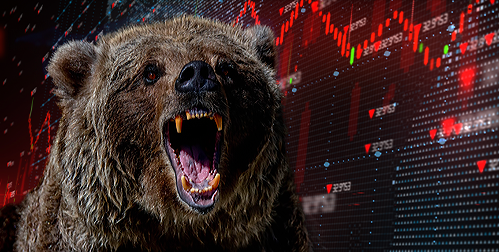Bear Market to Continue
The bear market isn’t going to hibernate through this winter. Goldman Sachs predicts lower stock prices will continue deep into next year. A sustained recovery won’t begin until interest rates peak. In the meantime, expect more volatility until the market bottoms out in 2023.
Goldman Sachs wrote, “The bear market is not over, in our view. The conditions that are typically consistent with an equity trough have not yet been reached. We would expect lower valuations (consistent with recessionary outcomes), a trough in the momentum of growth deterioration, and a peak in interest rates before a sustained recovery begins.”1
Analysts believe this is part of a larger business cycle. Historically, this type of downturn lasted an average of 26 months. Which means it takes about 50 months to recover. There will be rallies along the way before an actual recovery has happened.
Better than expect inflation data spurred a 1200-point rally on the DJIA and caused the S&P 500 to jump 5%. Morgan Stanley said, “This is not the start of a new bull market.” They called the S&P’s nearly 10% surge “yet another bear market rally” tied to better inflation data, before adding: “We advise caution.”2
Investors reacted on the hopes that the lower inflation meant the Fed is going to ease up on its aggressive interest rate plan. This, despite the Fed openly saying the opposite.
“Let me say this,” Fed Chairman Jerome Powell told reporters earlier this month. “It is very premature to be thinking about pausing. When people hear lags, they think about pauses. It’s very premature, in my view, to talk about pausing our rate hikes. We have a way to go.”3
Goldman considered it a bear market bounce, not the end of the bear market. They think the danger is the speed of the interest rate hikes. The Fed has approved four consecutive 75-basis point rate hikes. And there is no sign of any pausing in the future.
Earnings Expectations Drag Stocks Down
Economists are very concerned about unrealistic earnings expectations. Stock prices move when a company’s actual earnings differ from what analysts were expecting. Morningstar recently analyzed companies that missed their earnings expectations in the third quarter. Those companies saw their stock prices drop an average of 2.5% immediately. Earnings are a reflection of the economy. When consumers are spending more, companies earn more. But when earnings drop, it’s a sign of that the people are in financial distress and recession is imminent.
Morgan Stanley’s Chief Equity strategist believes estimates are still too high for 2023. No one knows how much expectations must drop to avoid market upsets. Analysts are adjusting their forecasts to avoid those upsets. A recent Bank of America report found earnings estimates have been cut three times as much a usual. Morgan Stanley expects the S&P to bottom out at almost 20% lower than today’s level in the beginning of next year. They also see corporate profits falling 11% over the course of 2023.4
Investors are facing a long-term bear market. Their focus should shift to a defensive position to protect against loss. Our Gold IRA can secure your funds from extended market downturns. Contact us today to learn more.







